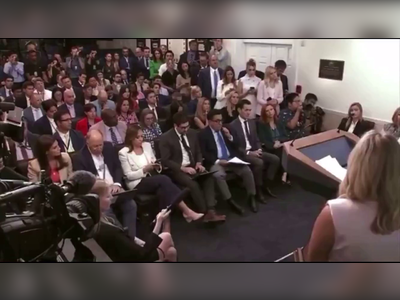
Retired head of vaccine R&D at Pfizer about COVID vaccines: “We flew the aeroplane while we were still building it”
The unique power of vaccines to prevent disease captured Kathrin Jansen’s imagination at an early age. “I remember lining up in the school auditorium for my smallpox vaccine. I thought it was amazing: one shot and you’re done. Great!”
Vaccines have not provided quite such a simple solution for COVID, but the ultra-rapid development of these products has been a game-changing lifeline for a world in the throes of a viral pandemic. Jansen, who has now stepped down as Pfizer’s head of vaccine R&D, leaves the SARS-CoV-2 vaccine Comirnaty as an impressive capstone to a massive career showcasing the public health possibilities of vaccination.
Originally trained as a microbiologist in Germany and the USA, Jansen jumped to industry early on in her career. Over the course of 30 years, she has wielded different platforms to deliver some of industry’s most impactful vaccines. While at Merck & Co., for example, she drove the development of the recombinant virus-mimicking coat protein that enabled the human papillomavirus vaccine Gardasil, preventing the viral infection that causes cervical cancer. Later, at Pfizer, she embraced the protein–polysaccharide conjugate technology that led to the multivalent Prevnar vaccines for pneumococcal disease.
When the pandemic struck in 2020, Pfizer was already collaborating with BioNTech on mRNA vaccines for influenza. The partners ran with this experimental platform — and compressed vaccine development timelines from ten years to just nine months. In December 2020, Comirnaty became the first SARS-CoV-2 vaccine to secure authorization in the UK, the USA and other countries.
Over 1 billion doses of the vaccine have now been administered in the USA and Europe. Total sales for this record-breaking vaccine are forecast to exceed US$70 billion by the end of 2022.
But this success has brought the issue of vaccine pushback into sharp focus. “I find it astounding, after all that humankind went through, how many people still do not see the value of vaccines and don’t get immunized,” says Jansen. “Society now just accepts 400 COVID deaths every day in the USA, for example. This is just mind-boggling.”
How did you develop a vaccine for SARS-CoV-2 so quickly?
Over the years we had built a strong infrastructure, particularly through the pneumococcal conjugate vaccine programmes. But COVID changed everything in terms of how to approach the end-to-end vaccine R&D concept, driven by the enormous urgency.
[In March 2020] when our CEO said, “Get it done before the end of the year,” I said, “This is crazy!” But money was not an issue — and, then, you can do amazing things in an amazing amount of time.
We got creative — we couldn’t wait for data, we had to do so much ‘at risk’. We flew the aeroplane while we were still building it.
All the bureaucracy fell away. We were doing things in parallel, looking at data and doing the manufacturing. Usually, manufacturing doesn’t get involved until years into a programme. I remember those calls with my manufacturing colleagues; I said, “We have four different constructs, get all four ready.” Then later we narrowed it down. We threw a lot away that wasn’t working, but we always had other things already at scale to take forward.
Why did you choose an mRNA platform for the vaccine?
I have experienced many different approaches to vaccine development, so I knew what would likely not work [against SARS-CoV-2] and what may work.
I was not willing to forego getting a strong T cell response, which steered us away from protein platforms.
Then having had the opportunity to work with BioNTech, it was clear to me that mRNA had to be the platform with the highest chance of success. I didn’t know whether it was possible at that time. All I knew was that, if anything works, it should be mRNA because it ticks all of the arms of the immune system — you get good T cell responses, antibodies and innate responses. T cell and innate responses, particularly for an older population, are where things usually fall down [with other platforms].
Another reason the mRNA platform came out as the front-runner was that we think you can boost as much and as long as you want and not get immune responses to the vector itself — the mRNA. If you use a viral vector, your immune response to the vector can tune down your response to the target — in this case, the SARS-CoV-2 spike protein.
But the mRNA platform wasn’t ready for prime time. There were stability issues, formulation issues, that we needed to solve. In 2020, it was only a research process and it needed to be scaled up. Usually, you start with a small reactor, and then you go to bigger and bigger reactors. We didn't have time to do this. Instead, we just cloned this relatively small-scale research process many times and over multiple sites to get to the capacity to produce billions of doses.
How did it feel to get an approval less than one year into the programme?
It was amazing. It showed what can be achieved if you put your mind to it, and if you put the resources to it, and if you also — which was unique — have the scientific community come together. Having information in those preprint servers or made rapidly available by publishers such as Nature, we could see in real time every new discovery. It wasn’t about who publishes first, but a willingness to share scientific data for the sake of dealing with this beast of the pandemic.
How replicable is that development speed?
This was a model for special circumstances, where people were willing to do whatever it takes. But we were working around the clock and there was a lot of burnout. It’s not a model for the future, where you can aim to do everything that way. It’s not sustainable.
Do you think mRNA vaccine platforms will now become more dominant?
For some viral diseases, the mRNA platform is super, and there’s a bunch of mRNA candidates now that are being worked on. [Target pathogens include influenza, rabies and others].
But the jury is still out on whether mRNA vaccines could play a role against some of the bacterial pathogens. For example, for the pneumococcal conjugate vaccines, you need a protein carrier and a polysaccharide that has been derived from the pathogen. That doesn’t lend itself to mRNA at all.
How has your experience across such varied pathogens shaped your general approach to vaccine R&D?
You can’t just take a technology and throw it at every pathogen — it’s not going to work. I was always interested in finding the right technology. Some companies are focused on a single technology for vaccines. But one hat doesn’t fit all heads. When you look at the portfolio at Pfizer, for example, we have mRNA, protein and polysaccharide conjugate vaccines. When we need a new technology, we get the new technology. That’s why we got into mRNA, for example — because I said, “All the other technologies have been tried and we are not getting a game-changing flu vaccine by sticking to the things that we know.”
Venturing into something new can be nerve-wracking, but I’ve always been willing to change according to where the science told me to go.
Apart from platform choice, what else is important for successful vaccine R&D?
Understanding of the pathogen is crucial.
A good example is RSV [respiratory syncytial virus]. People have worked on RSV vaccines for over 60 years and there have been some spectacular failures because people were targeting the wrong conformation of the viral fusion protein. It’s a protein on the virus surface that docks to the host cell and undergoes a conformation change that allows the virus to get into those cells. If you target the postfusion conformation, you don’t get a protective immune response. But people didn’t realise this until 2013, when researchers were able to stabilize and determine the crystal structure of the prefusion conformation.
We had ‘parked’ our RSV R&D programme, but when this data came out, we jumped on it and did some additional structural work. Now we have had spectacular results in a phase III study in adults. [Recent topline results show 85.7% vaccine efficacy against severe RSV-associated disease in adults over 60. Pfizer plans to file for approval by year end, competing with GSK for a first RSV vaccine to market.]
To succeed [in vaccine development] we also need to understand the pathogen–host interplay, and what are the true correlates of immune protection. For example, Pfizer is still working on Staphylococcus aureus. We tried to develop a protein–polysaccharide conjugate vaccine, and that failed miserably [in 2019]. Our problem is we just do not understand fully what a protective immune response against this pathogen needs to look like. Something is missing to understand how you keep that bacterium in check and protect yourself.
As a field, we’re still plagued by not having enough knowledge. I wish there would be more emphasis on understanding the biology, because a single entity like a company or a lab cannot do it alone. This has to be a coordinated effort on a pathogen-by-pathogen basis. It takes a lot of money. This is academic research involving huge studies that take years.
Along similar lines, how prepared are we for another pandemic?
When SARS-CoV-2 hit, I realized how absolutely ill-prepared we were as a community, not just in the USA, but everywhere.
When there’s a ‘crisis’ it can work, but it was such a fire drill. Why not be more prepared?
It’s all about investment, political will and cutting the bureaucracy. The lack of high-level learnings really concerns me.
Given the overall role of data sharing and basic research in vaccine development in general, and Comirnaty revenues in the case of COVID, how balanced do you think the reward system is?
It’s a complex question. You have to bear in mind that Pfizer and BioNTech covered the enormous R&D costs of Comirnaty, and didn’t get lots of government funding like other companies. And there were huge opportunity costs for other programmes because we drafted the vast majority of our researchers and support staff to work on this vaccine. Also, the strategy for vaccination against SARS-CoV-2 variants was based on the science and data coming from Pfizer and others.
So I do believe that there is balance overall, given the enormous impact of Comirnaty for public health globally and considering that there undoubtedly will be a next pandemic — best addressed by companies with the appropriate know-how and infrastructure.
Vaccines also have the potential to help address the growing, global infectious disease problem of antimicrobial resistance. What do you see as the main opportunities there?
There’s a fantastic opportunity to address antimicrobial resistance just by preventing disease in the first place. Pneumococcal conjugate vaccines are a classic example. Some of the data show that after the introduction of [multivalent conjugate vaccines], antimicrobial resistance was much reduced. Because you prevent the disease, you’re not giving antibiotics, and that slows the development of antimicrobial resistance.
But even vaccines for viral diseases present an opportunity to combat antibiotic resistance. Oftentimes when people have a respiratory tract infection, they get prescribed antibiotics because they haven’t been tested for the actual pathogen. There’s a lot of inappropriate use of antibiotics, and you can address this indirectly by preventing infections with respiratory pathogens. RSV will be a great example, because it’s so common.
What are you planning to do next?
I’m still working that out but, meanwhile, I’m teaching a vaccine course at The Wistar Institute. COVID has shown the power of vaccines. It’s important that we give the next generation of vaccinologists the enthusiasm about what an important field it is, to convey to them how far we have come already and how much more there is to do.
Comments










